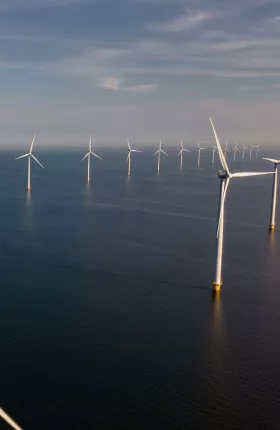Despite a sluggish economy and ongoing budget pressures, the demand for voluntary carbon-emissions credits is growing rapidly. And the focus of credit trading is shifting from reducing emissions to removing them altogether.
These are two of the key insights from BCG’s latest report on the voluntary carbon markets, written in partnership with Shell. Our global analysis also found that the influence of external organizations on buyers’ decisions is growing; that a reputable monitoring, reporting, and verification framework has become a priority when making purchase decisions; and that companies continue to monitor developments on Article 6 of the Paris Agreement to adapt their strategy as needed.
As more companies join the race to net zero, we hope this research will prove useful for those interested in making carbon credits part of their climate and sustainability strategies.
An Update on the Voluntary Carbon Market
Companies that wish to offset their greenhouse gas emissions can purchase two different types of credits in the voluntary market: avoidance credits for external projects that avoid or reduce emissions production, such as building a wind farm, and removal credits for projects that lower existing emissions. Removal projects deploy either nature-based solutions such as afforestation (introducing trees to a previously unforested area) or technology-based solutions such as renewable energy generation.
In 2021, the voluntary carbon market grew at a record pace, reaching $2 billion—four times its value in 2020—and the pace of purchases is still accelerating in 2022. By 2030, the market is expected to reach between $10 billion and $40 billion.
Five Important Insights
To better understand the impact of current economic headwinds on companies’ carbon-offset purchase strategies, we conducted a worldwide survey of over 200 environmental and sustainability executives across sectors and interviewed over 20 executives in depth. Five key findings emerged:
- Buyers see spending on carbon credits as nondiscretionary and expect demand to grow. Despite greater economic challenges, most respondents think that the volume of emissions compensated through offsets will increase as more companies set net-zero targets. We found, in fact, that demand for some classes of credit, such as nature-based credits, could soon outstrip supply.
- External organizations are increasingly influencing buyers’ decisions. Companies expect organizations such as the Science Based Targets initiative and the Voluntary Carbon Markets Integrity Initiative to have an increasing influence on market trends; the emerging guidance of these organizations therefore will likely impact market growth.
- A reputable monitoring, reporting, and verification (MRV) framework is a top criterion for purchasing credits. Over 90% of buyers rank MRV as a major factor in credit purchase decisions. As the spotlight on carbon offsets grows, buyers want to ensure that the credits they buy have an impact that’s easy to prove and defensible against claims of greenwashing.
- More than half of companies surveyed expect removal credits to dominate their portfolio by 2030. Although removal credits are expensive, they have gained a following because of their quality—it’s easier to verify a project’s impact than with avoidance credits. Technology-based removals are expected to gain market share as the technology matures and becomes more affordable.
- Companies have limited clarity on the impact of Article 6 and corresponding adjustments. Article 6 of the Paris Agreement allows countries to help each other achieve their national determined contribution (NDC) to global emissions reduction. One country can, for example, sell its carbon credits to another, but only one may apply the credit to its NDC. Corresponding adjustments are an accounting mechanism to prevent any double counting between countries, but they could impact companies that wish to source credits internationally. Respondents are also divided on whether Article 6 will lead to a global compliance market, though they expect that an infrastructure for corresponding adjustments will be put in place over the next five years.
The Sustainable Advantage: Build lasting impact through sustainability
The Avoidance-Removal Debate
According to our analysis, avoidance credits currently represent about 80% of supply, but removal credits are expected to reach 35% by 2030. Our survey respondents expect an even more aggressive shift. Are removals now the best market play?
In the context of the shrinking carbon budget, relying exclusively on removal credits seems premature given that we are still underperforming on reducing emissions globally. We’re cutting down forests much faster than any afforestation or reforestation efforts can replace them, for example—so it’s critical to fund the avoidance that stops deforestation. Ultimately, a combination of verifiable avoidance and removal projects will be necessary. The focus, therefore, should be on the quality of both types of credits as the market continues to mature.
The rapid rise in voluntary purchases of emissions credits, even in uncertain times, reflects companies’ commitment to reaching net zero and the growing importance of the carbon market. But decarbonization must start with reducing emissions: offsets are an additional tool, not a replacement. And we must ensure that credits deliver on their promises.




